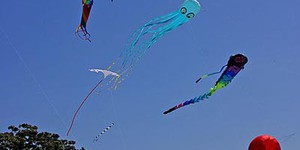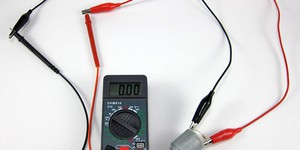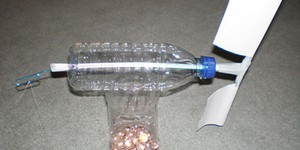Others Like “How Low Can It Go? Design a Kite that Flies Best in Low Winds” (top 20 results)
|
Kites have been a source of entertainment for centuries for kids from cultures around the world. In this science project you will have a chance to build your very own kite, a simple sled kite. Then you will use it to investigate how kites fly. Will you find out the best way to fly your kite?
Read more
On a windy day it is hard to keep your hat on! The power of the wind can even be strong enough to power large wind turbines to make electricity! In this experiment, find out how you can make your own instrument to measure the speed and power of the wind. How does it work?
Read more
Have you heard the term windchill used before? Maybe on the TV weather forecast? The windchill factor describes what happens to an object (like your body) when it is cold and windy outside. As wind increases, heat is carried away from the body at a faster rate, driving down both skin temperature (which can cause frostbite) and eventually the internal body temperature (which, in extreme cases, can lead to death). In this science fair project, you will use a device to measure wind speed (an…
Read more
The Wright brothers used kites extensively to test their design ideas in the years leading up to their first successful airplane flight. With this science project, you'll learn about kite aerodynamics, and then come up with your own hypothesis about building or flying a kite. You can test your hypothesis two ways: with an online kite simulation program from NASA, and outdoors with the real thing! A great feature of this science project is that it has many possible variations, so you can decide…
Read more
How does a helicopter generate enough lift to fly? How does a speedboat get moving fast enough to pull someone on water skis? Here's a project on designing propellers to do the job.
Read more
Have you ever flown in an airplane, or looked up at one flying in the sky, and wondered how such a massive machine can stay in the air? Airplanes can stay in the air because their wings, also referred to as airfoils, generate lift. Engineers use devices called wind tunnels to experiment and test different wing shapes when they design new airplanes. Wind tunnels let engineers make careful measurements of the air flow around the wing, and measure the amount of lift it generates.
If you can get…
Read more
A technique often used in wind tunnels is to introduce smoke in front of the airfoil that is being tested. The smoke comes from regularly-spaced point sources, and the wind flow in the tunnel spreads it out into parallel lines, called streamlines. The streamlines make it possible to visualize the airflow over the airfoil. When the lines continue smoothly over and past the airflow, they show that the flow remains laminar, and that the airfoil is creating very little drag. When the…
Read more
Have you ever seen butterflies fluttering around outside, gliding through the air and landing on flowers? While they are delicate and fragile, butterflies are actually excellent flyers. They are so good, in fact, that scientists at Harvard University studied butterfly wing shapes as an inspiration for building a miniature flying robot. In this science project, you will do your own version of the Harvard scientists' experiment to measure the flight performance of butterfly wings.
Read more
Alternative energy sources are a big deal these days. One such source is the wind. Find out how a wind turbine can use the power of the wind to generate energy in this science fair engineering project. You'll design various blades to find out which produces the most energy, and put the wind to work for you!
Read more
Try different wind turbine/propeller (chord length, pitch) designs by making models from balsa wood. Connect the spinning axle to a DC motor and measure the voltage produced across a resistor to measure power output. Use fan as wind source. (Judge, 2004)
Read more
|
Explore Our Science Videos
How to Make Slime
How Strong Is Your Hair? – STEM Activity
Magic Triangles - Fun Math Puzzles with Increasing Difficulty












